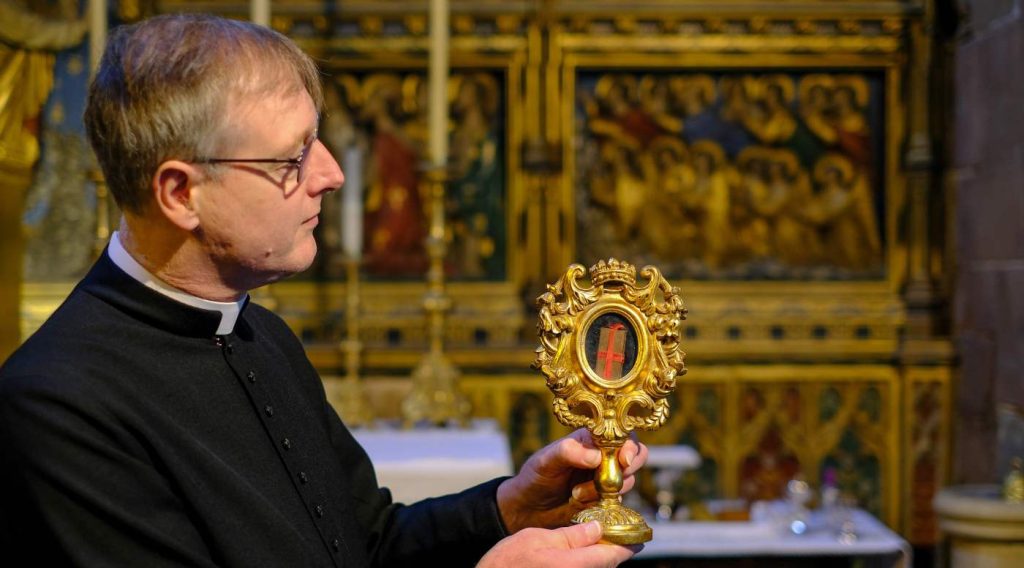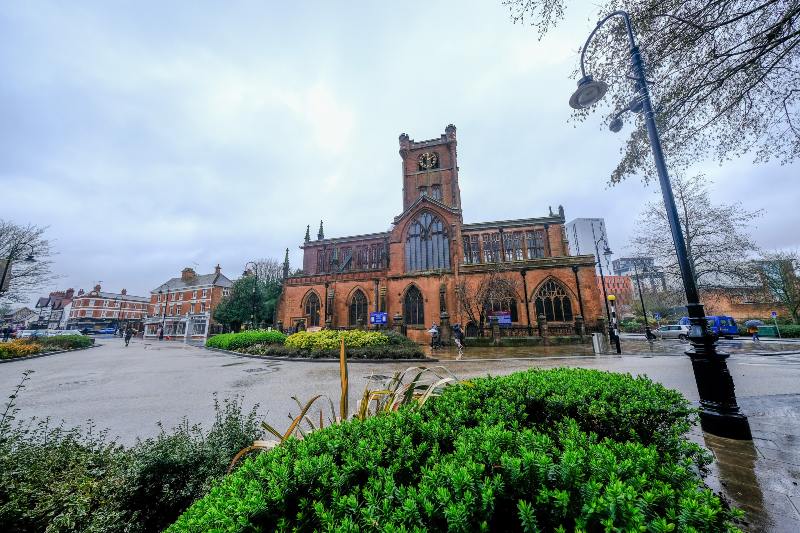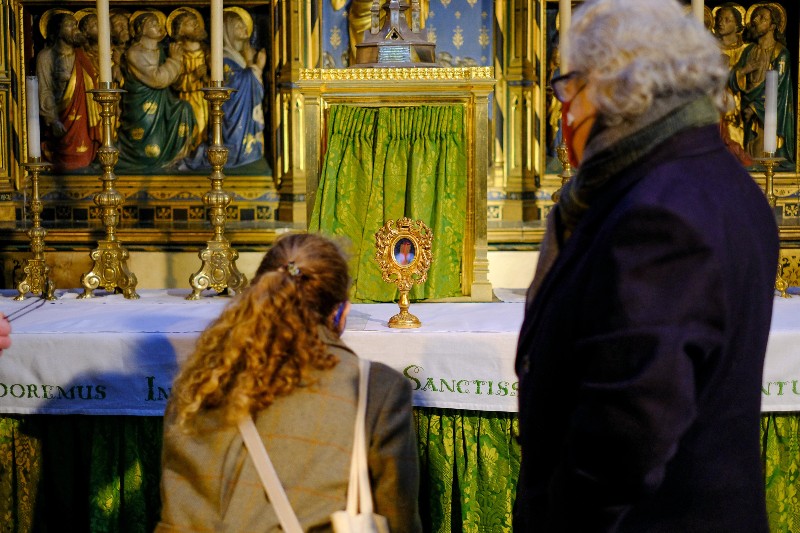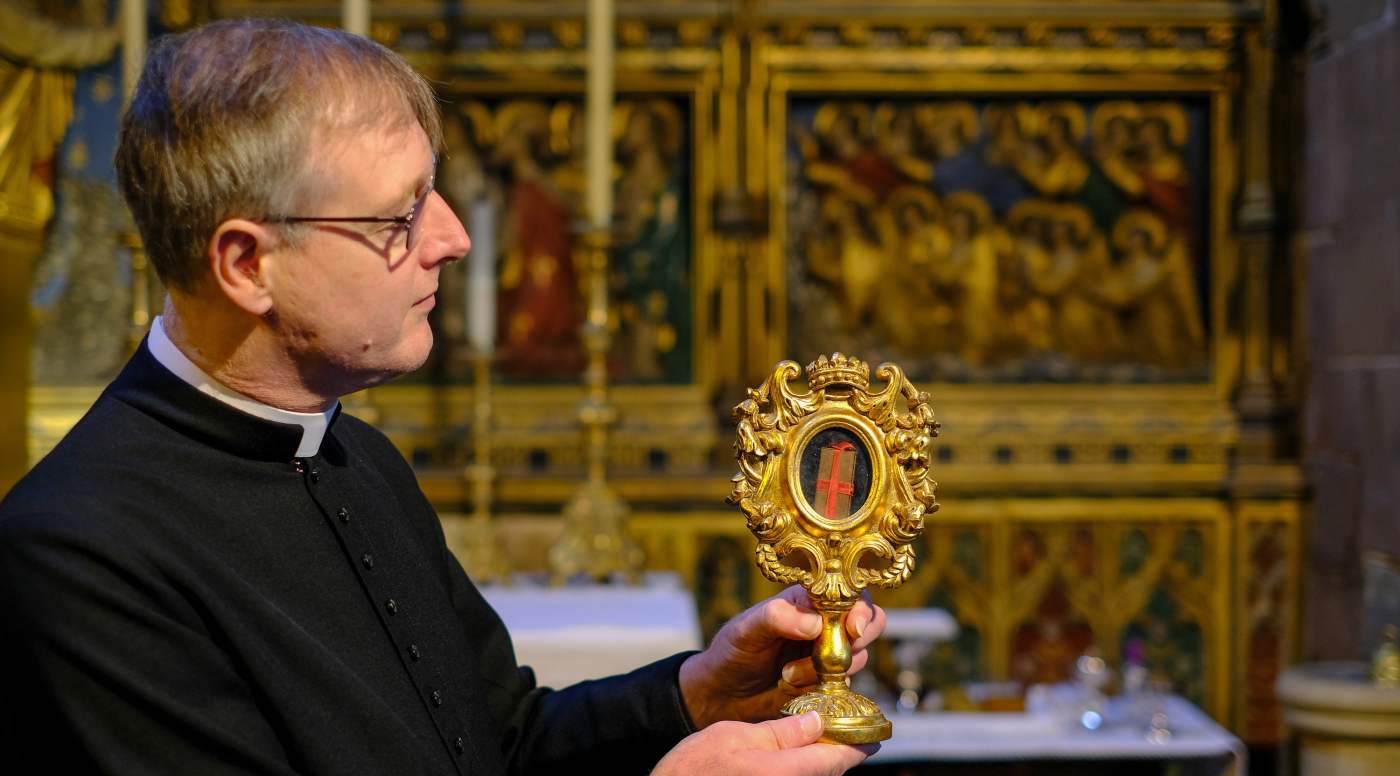
Couples have flocked to a medieval church to be blessed by a priest with an ancient shard of bone purported to be from the finger of St Valentine himself.
The fragment of bone has been displayed in a 10cm (4 inch) reliquary placed on the altar at St John the Baptist in central Coventry for Valentine’s Day.
The relic is believed to have been at the church for more than 180 years and even survived The Blitz when the English city faced heavy German air raids in 1940.
Loved-up couples visited the church over the weekend to be blessed by Father Dexter Bracey, the Rector of St John’s, with the unusual relic.
One visitor said, “I know some people might find it a bit bizarre but we don’t have many mysterious ancient relics in Coventry so we find it really fascinating.
“It might be slightly macabre rather than romantic but to be blessed in the presence of St Valentine himself can only be a good thing, right?”
The story of how a piece of the 3rd-century Roman saint ended up in Coventry is typical of the church, which is renowned for a past shrouded in mystery.

In the early 1830s, a catacomb in Rome said to contain St Valentine was excavated and the tiny basilica of Santa’s Maris in Cosmedin in Rome now houses his skull.
In 1838 the Roman Curia ordered the sending out of various body parts in packages to Roman churches all over the world.
Relics became symbols of prestige for churches and cities, and St John’s Church was a well-established and influential place of worship.
It was founded in 1344 following the death of Edward II by his widow Queen Isabella, and continued to have royal patronage.
At that time Coventry did not have a Roman Catholic church and St John’s appeared to be an active church, but within the strict discipline of the Church of England.

Mike Polanyk, visitor liaison and communications officer, said, “Sadly existing records during the 19th century are scant—they were either burnt in a fire in 1861 or lost in the Great Flood of 1900.
MORE: A Valentine’s Day Message for the World: Love Never Fails
“We do know the 1906 renovation and subsequent additions to the fabric of St John’s reflected the influence of the Oxford movement and a ‘high church’ worship under rector Fr Robinson at the church—both before and during the First World War, so the relic could have been transferred to the church then.
“When the War Memorial Window was being constructed in 1921, we know of an instruction that says ‘the window is in keeping with the sacred artefacts on display there’… but it doesn’t say what.”
There was no firm mention of the relic in the church records until the 1930s when acclaimed architect Sir Ninian Comper redesigned the south-facing Saint John’s Chapel.
Mr Polanyk added, “He also gave the chapel an Oxford movement feel as well as a fetching tabernacle for the relic, which gained the admiration of Sir John Betjeman.
“Comper wanted a suitable resting place for the artefact, being impressed by the wax seal affixed to it with a stamp of authenticity.
“I find it interesting the relic and tabernacle survived the first Blitz in 1940, despite the damage to the rest of the chapel.”
SHARE This Fascinating History With Others on Social Media…




















